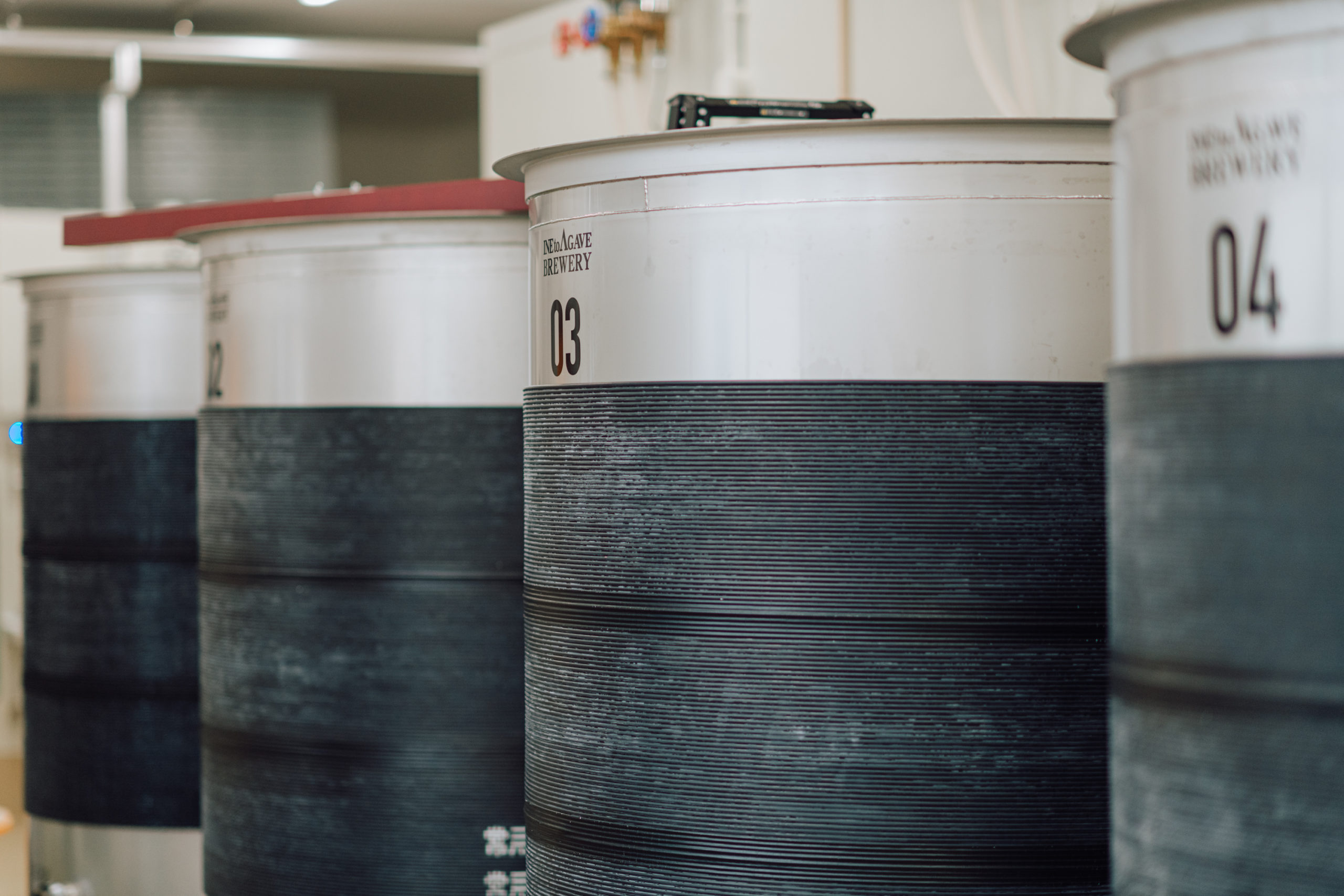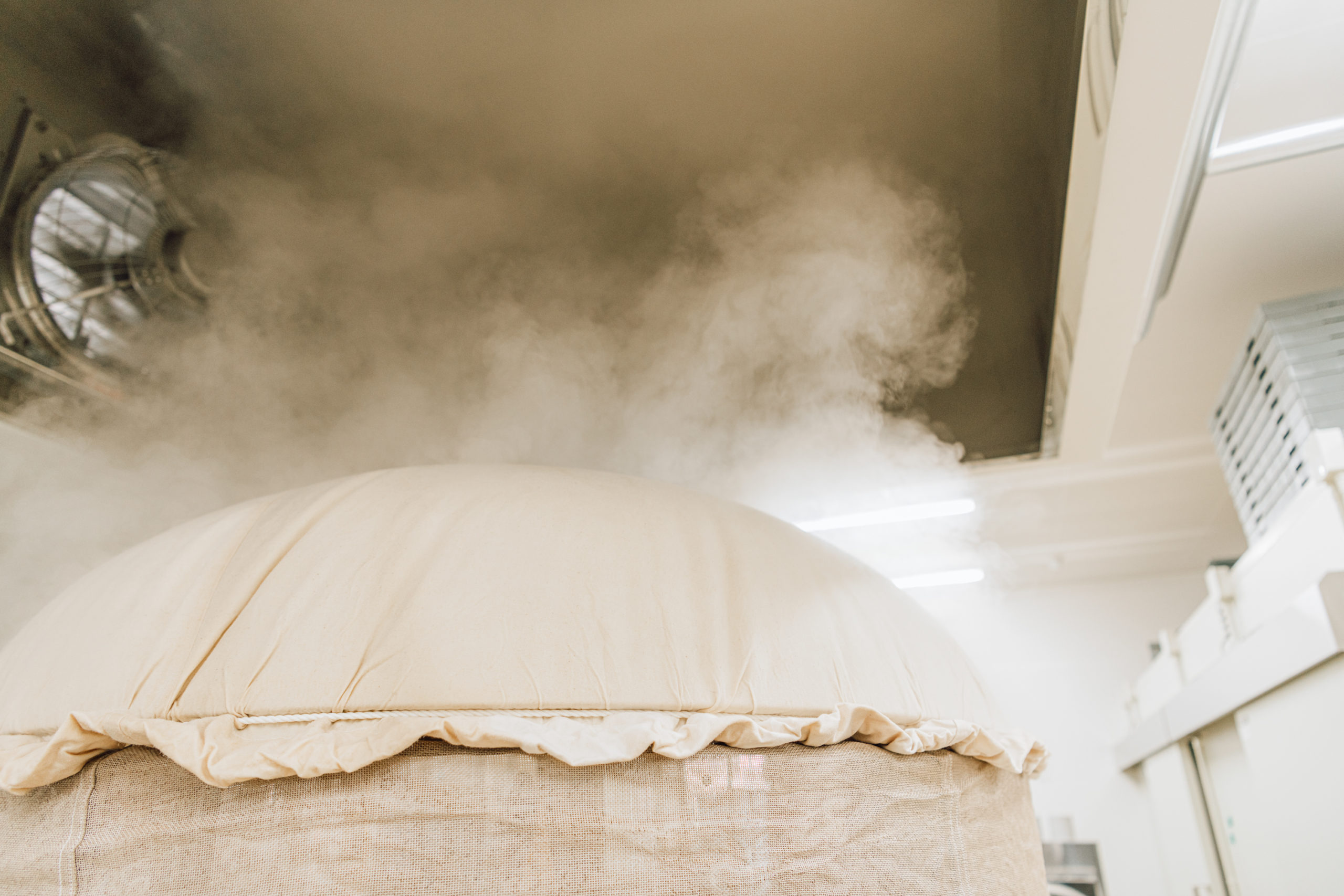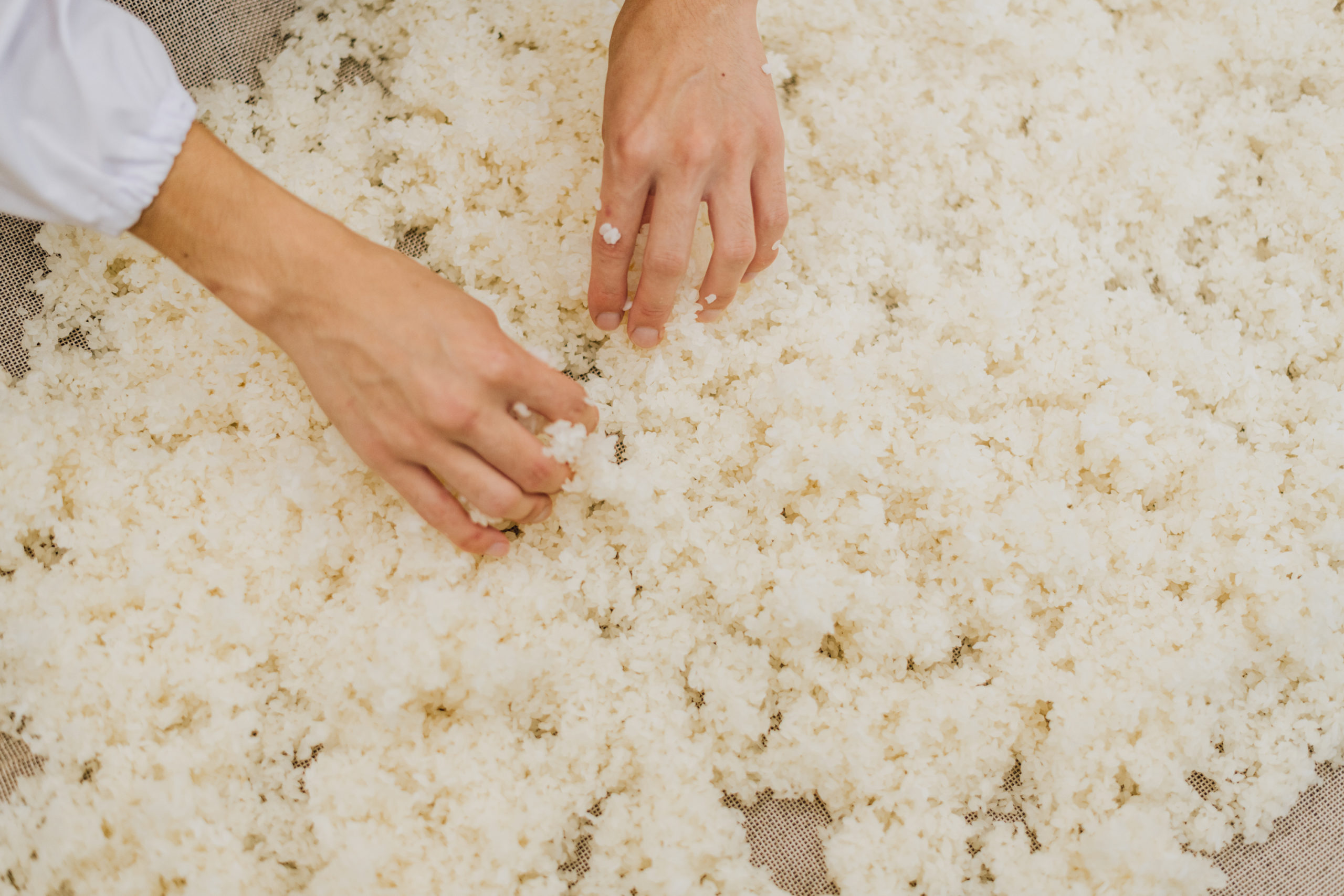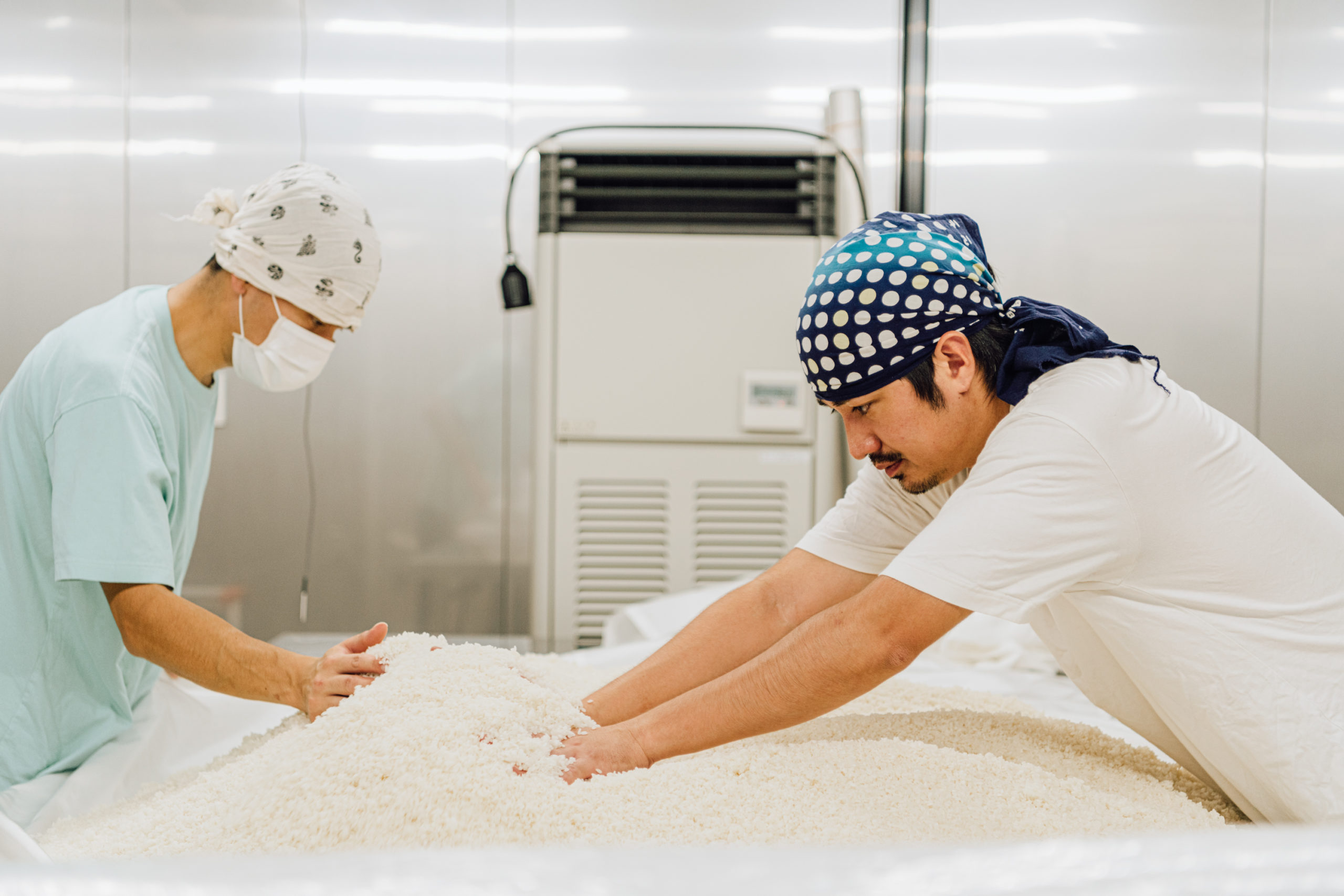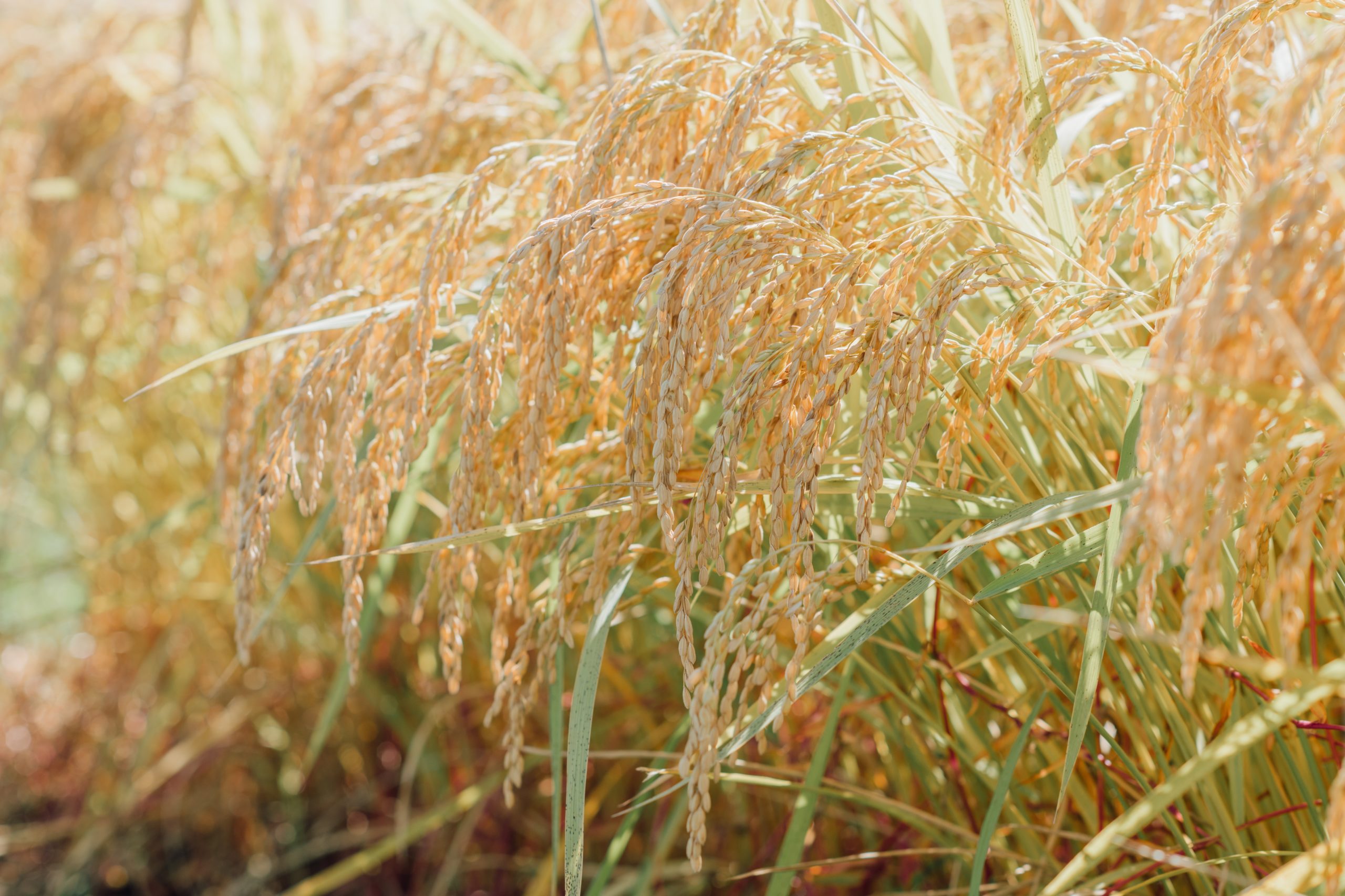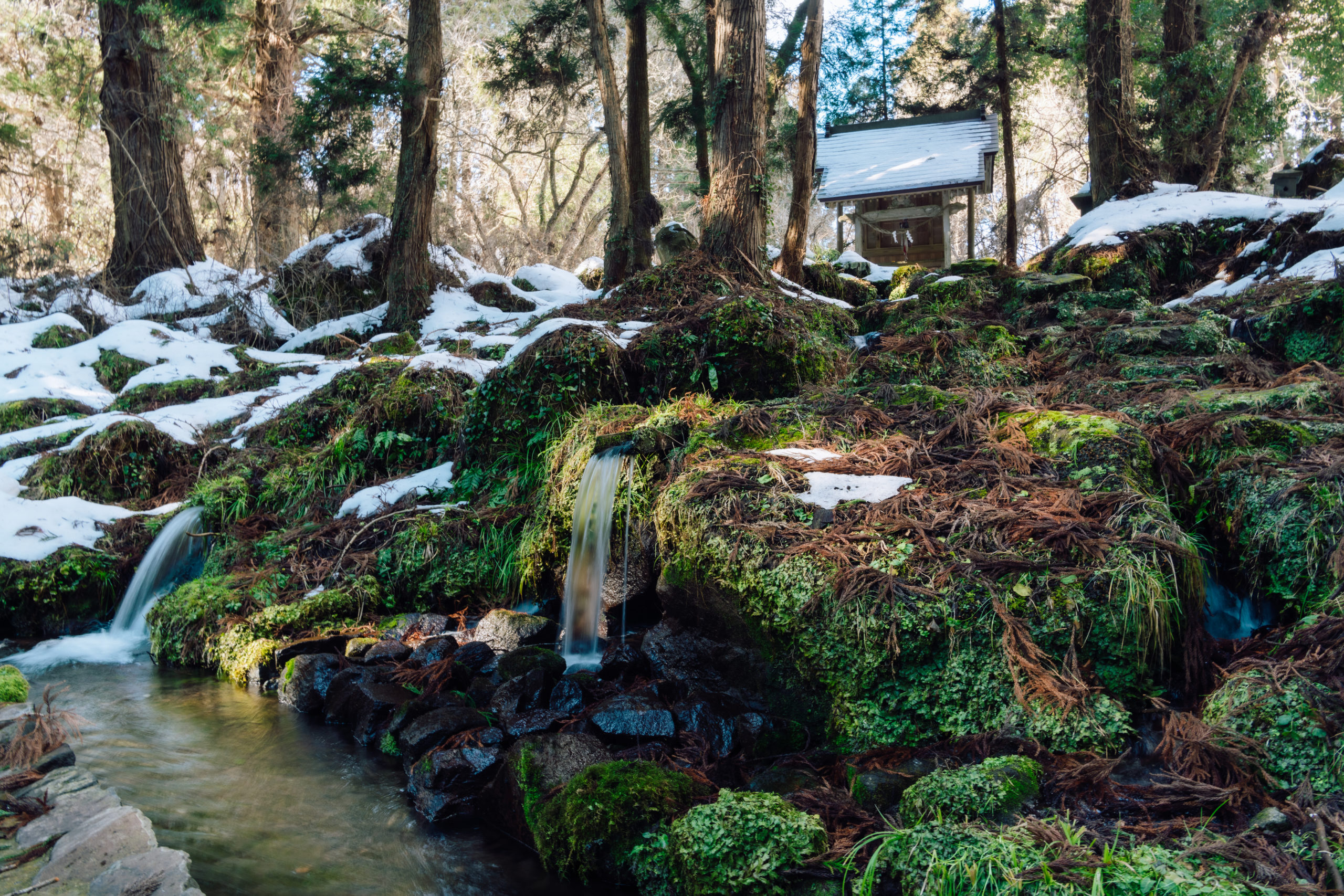
FERMENTATION-稲とアガベの酒造り-
既成概念と向き合い、体感を大切にする酒造り
稲とアガベの酒造りは、「常識を疑う」ことから始まります。「おいしいお酒」を生み出すために、時には教科書や論文に書かれた方法とは異なる造り方を選ぶということです。
酒造りとは、米を磨き、洗米し、麹を造り、酒母を造り、もろみを仕込むという一連の作業をチームプレーで行います。秋田市の酒蔵で働いていたころ、麹づくりを担当していた時に、「自分が最高の麹だと思うものをつくっても、次の工程のチームに最高だと思ってもらえなければよいお酒はできない」ということを教わりました。
理想のお酒の味わいから逆算し、一つひとつの工程と向き合う。例えば、稲とアガベの麹づくりは、一般的な酒蔵がかけるよりも短い時間のなかで造られています。若い麹を使うほうが、できあがるお酒の味わいが飲みやすくなるからです。米を洗い、蒸して、麹をつくり、といった工程のところどころで、蔵人全員でその手ざわりを確かめ、香りを嗅ぎ、舌で味わいます。その瞬間瞬間に「おいしい」「心地よい」と感じられる変化を積み重ねることで、最終的なおいしさへと結びつく。文献を通して日々学びながらも、決して鵜呑みにはせず、体感を大切にする酒造りを行っています。
FERMENTATION
Challenge Stereotypes, Value Experience
Our sake brewing starts by questioning the conventional wisdom. Sometimes this means choosing a different method to the one described in the textbooks and papers, in order to produce great sake.
Sake brewing is a series of processes with teamwork at the heart: polishing, washing the rice, making koji, making yeast starter and brewing the mash. While working at Aramasa Brewery, in charge of making koji, Okazumi learned that even if you make what you think is the best koji, you can’t make great sake unless the next team in the process also thinks it’s the best.
We work backwards from the ideal taste and consider each step of the process. For example, for the process of making koji, we take less time than a typical sake brewery. This is because the younger the koji is, the more drinkable the resulting sake will be. At every stage of the process, all the brewers get to know the texture, smell the aroma and taste the flavour. It is the accumulation of the changes that make each moment delicious that leads to the final taste. We learn from the texts, but we do not take them for granted.
FERMENTATION發酵
與現有概念相配合,重視體驗的釀造清酒
「稲とアガベ」的造酒,是從「對常識抱有懷疑態度」開始。為了生產出「美味的清酒」,有時會選擇有別於教科書以及論文上的釀造方法。
而所謂造酒,是經過磨米、洗米、製麴、製造酒母,以及準備醪等一連串團隊工序所構成的。於新政酒造工作的時候擔當著對造酒很重要製麴崗位的岡住先生,就注意到「就算自己認為造出了最好的麴,若不能認為擔當往後工序的團隊是最好的,就不能釀造出好的清酒」的道理。
從理想的清酒味道計算過來,配合著一個個不同的工序。例如:「稲とアガベ」的製麴時間會比一般的酒藏為短。由於採用了比較年輕的麴,所釀造出來清酒的味道會更容易飲用。洗米、蒸米、製麴等等工序的各個範疇,岡住先生會靠自己的感 觀來確認、嗅其氣味、並以舌頭品嚐。透過其瞬間感受到的「美味」、「舒服」、「愉悅」等堆積著的變化,從而與最終的美味連結起來。就算每日通過文獻來學習,也決不能只是囫圇吞棗,而是要進行著各式各樣的體驗來釀造清酒。


